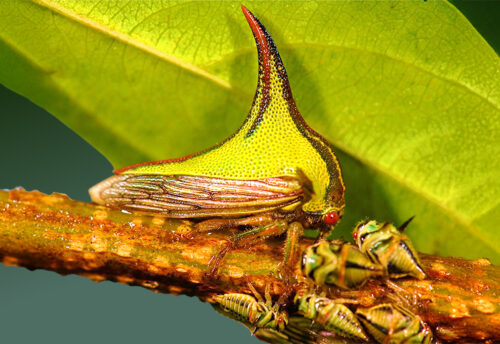
Looking like some sort of feathery mystical creature, the great eared nightjar hails from southwest India, parts of Southeast Asia, and Australasia. They prefer moist lowland tropical forests and subtropical forests. Due to their stable population and no severe threats, sans habitat loss and human interference, these birds are listed as Least Concern by the IUCN. And even though they look like little dragons, no you can’t take 1 home with you. They are protected and wouldn’t make a good pet anyway.
First the Stats…
Scientific name: Lyncornis macrotis
Weight: Up to 5.32 ounces
Length: Up to 16 inches
Wingspan: Up to 28+ inches
Lifespan: Up to 12+ years
Now on to the Facts!
1.) In 1831, this nightjar species was formally described by the Irish zoologist Nicholas Aylward Vigors.
2.) There are 7 known species of nightjar described to date.
3.) Like most raptors, the great eared nightjar is sexually dimorphic (males and females look notably different) in that females are larger than males.
4.) Great eared nightjars are the largest of the nightjar species, but the second heaviest, after the nacunda nightjar.
5.) They are both nocturnal (active at night) and crepuscular (active during dawn and dusk).
But wait, there’s more on the great eared nightjar!
6.) Their calls are a sharp “tsiik” followed by a pause and a 2-syllable “ba-haaww.”
7.) Being primarily terrestrial (spend their lives on the ground), these birds also build their nest on the ground as well. The nest consists of a mere scrape or impression.
Did you know…?
They spend a good deal of time on the ground, but they are capable of great skill in flight. They even catch flying insects, on the wing (in flight).
8.) Females lay a single egg that hatches in up to 4 weeks.
9.) Both the male and female tend to the egg and chick.
10.) Chicks can walk soon after hatching.
But wait, there’s still more on the great eared nightjar!
11.) Great eared nightjars prey on a variety of flying insects, like moths and beetles.
12.) These birds were named in the 17th-century because they were active at night and make a jarring noise. Simple enough.
Did you know…?
Not only do they catch prey in mid flight, they also drink while flying. They skim the surface of the water body and scoop up drops of water.
13.) European poets also referred to these nightjars as “lich fowle” and “dew-hawks.”
14.) Like other nocturnal birds, these critters possess a tapetum lucidum. This is a reflective membrane in the back of the eye that aids in night vision.
15.) Believe it or not, these birds are related to hummingbirds.
16.) Foxes, hedgehogs, domestic dogs, martens, weasels, crows, magpies, jays, owls, and snakes all prey on these critters.
Now a Short Great Eared Nightjar Video!
Be sure to share & comment below! Also, check out the Critter Science YouTube channel. Videos added regularly!
Want to suggest a critter for me to write about? Let me know here.
Think you know a lot about critters? Try your hand at these fun, free quizzes:



